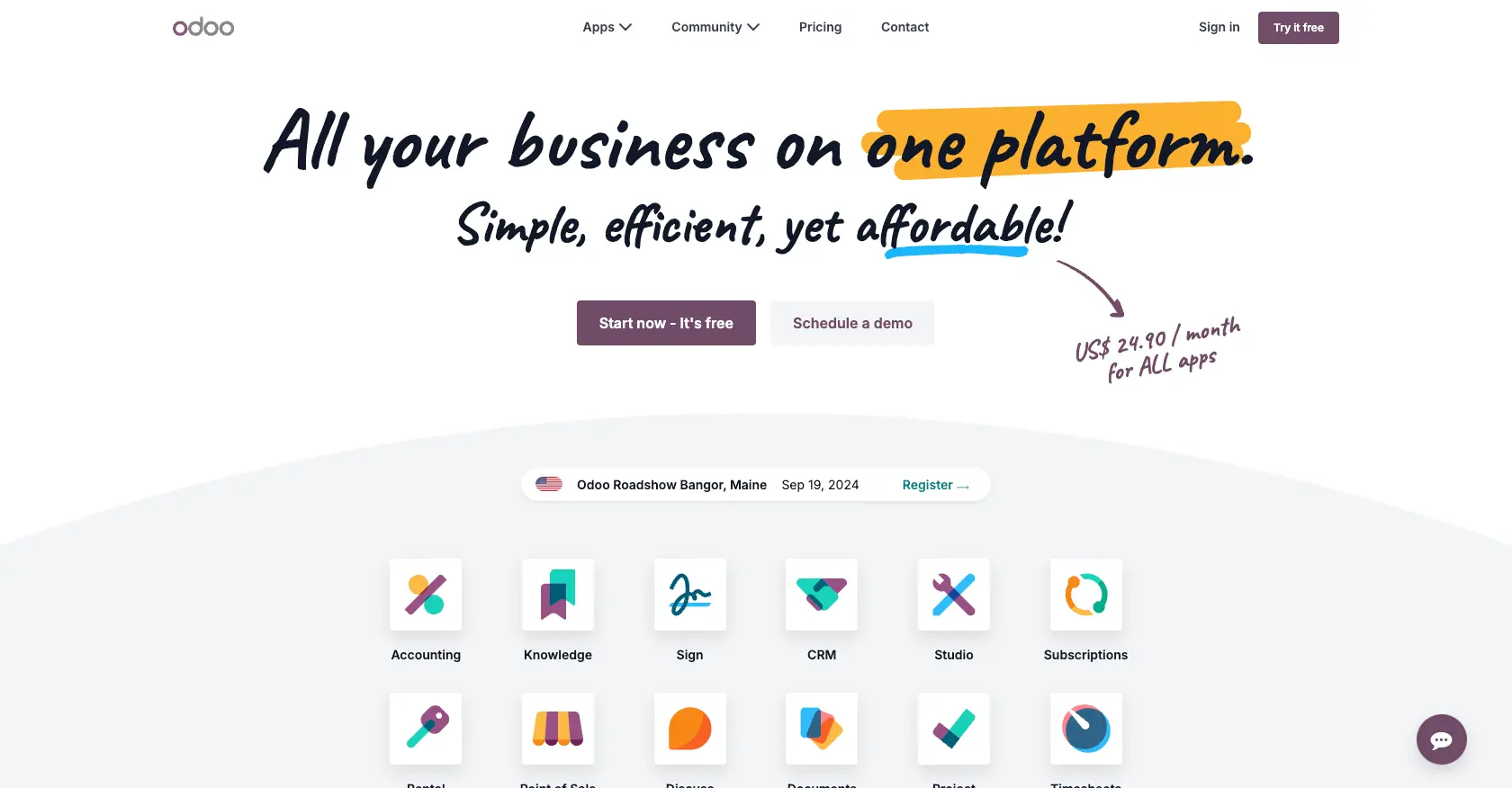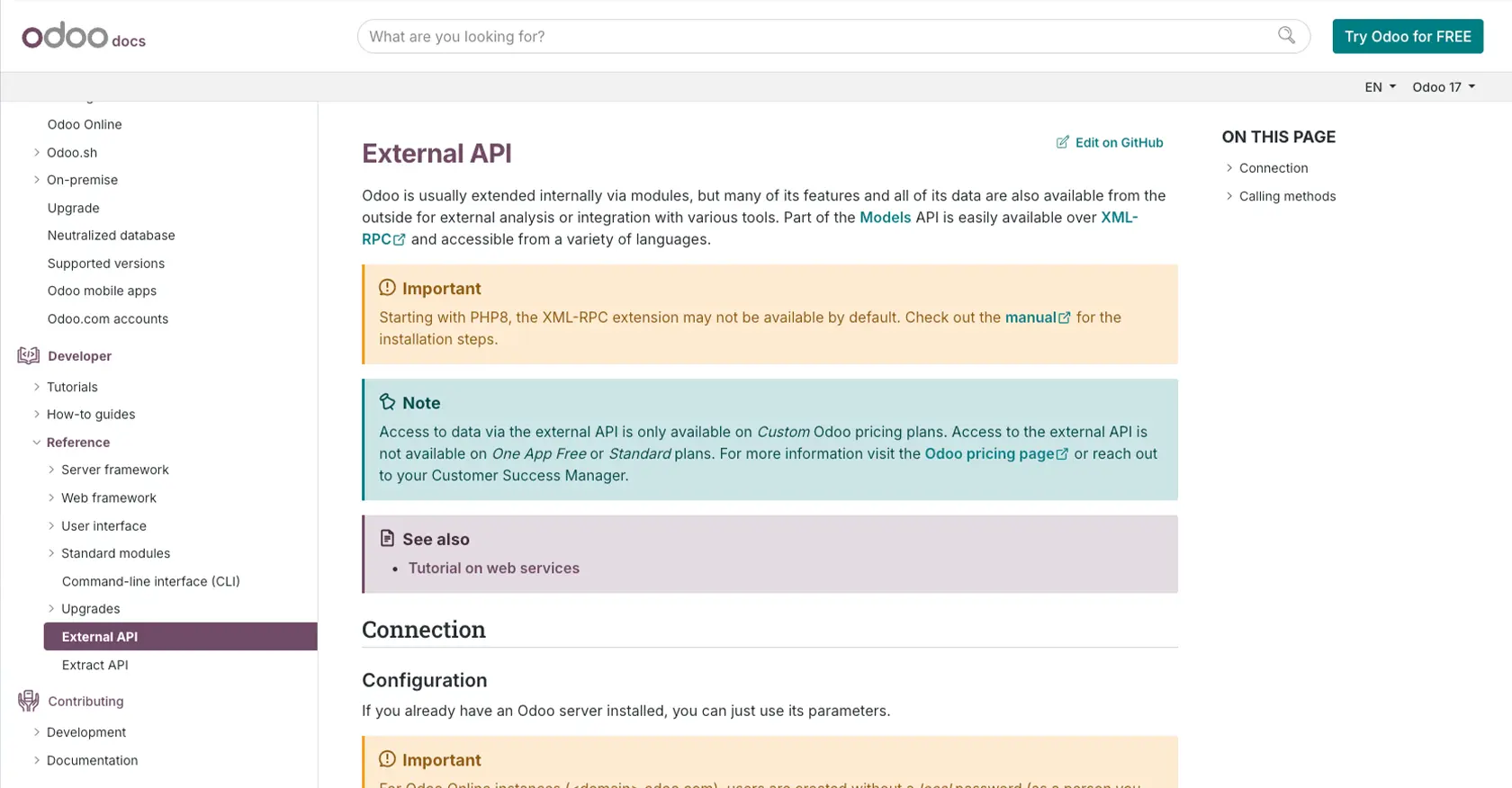Using the Odoo Online API to Get Records (with Python examples)

Introduction to Odoo Online API
Odoo Online is a comprehensive suite of business applications designed to streamline various business processes, including CRM, sales, project management, and inventory management. Its modular approach allows businesses to customize and scale their operations efficiently.
For developers, integrating with the Odoo Online API can unlock powerful capabilities to automate and enhance business workflows. For example, you might want to retrieve records from Odoo's CRM module to analyze customer interactions and improve sales strategies.
Setting Up Your Odoo Online Test/Sandbox Account
Before you can start interacting with the Odoo Online API, you'll need to set up a test or sandbox account. This environment allows you to experiment with API calls without affecting live data, making it ideal for development and testing purposes.
Creating an Odoo Online Account
If you don't already have an Odoo Online account, you can sign up for a free trial on the Odoo website. This trial provides access to the full suite of Odoo applications, enabling you to explore and test various modules.
- Visit the Odoo website and click on the "Start Now" button.
- Fill out the registration form with your details and select the applications you wish to explore.
- Once registered, you'll receive an email to verify your account. Follow the instructions to complete the setup.
Accessing the Odoo Online Sandbox Environment
After setting up your account, you can access the sandbox environment, which mirrors the live environment but is isolated for testing purposes. This allows you to safely test API interactions.
- Log in to your Odoo Online account.
- Navigate to the dashboard where you can manage your applications and settings.
- Ensure you have the necessary modules installed for the API interactions you plan to test.
Configuring API Authentication for Odoo Online
Odoo Online uses a custom authentication method for API access. You'll need to generate an API key to authenticate your requests.
- In your Odoo Online dashboard, go to the "Settings" menu.
- Under the "Users & Companies" section, select "Users" and choose your user profile.
- Scroll down to the "API Keys" section and click "Create" to generate a new API key.
- Copy the generated API key and store it securely, as you'll need it for API requests.
With your sandbox account and API key ready, you can proceed to make API calls to retrieve records from Odoo Online. This setup ensures a secure and controlled environment for testing and development.

sbb-itb-96038d7
Making API Calls to Retrieve Records from Odoo Online Using Python
To interact with the Odoo Online API and retrieve records, you'll need to use Python, a versatile programming language known for its simplicity and readability. This section will guide you through the process of setting up your Python environment, making API calls, and handling responses effectively.
Setting Up Your Python Environment for Odoo Online API Integration
Before making API calls, ensure that you have the following prerequisites installed on your machine:
- Python 3.11.1 or later
- The Python package installer, pip
Once you have these installed, open your terminal or command prompt and install the requests library, which will be used to make HTTP requests:
pip install requestsWriting Python Code to Retrieve Records from Odoo Online
With your environment set up, you can now write the Python code to interact with the Odoo Online API. Create a file named get_odoo_records.py and add the following code:
import requests
# Set the API endpoint and headers
url = "https://your-odoo-instance.odoo.com/api/v1/your_endpoint"
headers = {
"Content-Type": "application/json",
"Authorization": "Bearer Your_API_Key"
}
# Make a GET request to the API
response = requests.get(url, headers=headers)
# Check if the request was successful
if response.status_code == 200:
data = response.json()
# Process the retrieved records
for record in data:
print(record)
else:
print(f"Failed to retrieve records: {response.status_code} - {response.text}")
Replace Your_API_Key with the API key you generated earlier, and your_endpoint with the specific endpoint you wish to access.
Verifying Successful API Requests and Handling Errors
After running the script, you should see the records printed in your terminal. If the request is successful, the status code will be 200, indicating that the records have been retrieved successfully.
In case of errors, the script will print the status code and error message. Common error codes include:
- 401 Unauthorized: Check your API key and ensure it's correct.
- 403 Forbidden: Verify your permissions and access rights.
- 404 Not Found: Ensure the endpoint URL is correct.
Refer to the Odoo Online API documentation for more details on error handling and troubleshooting.
Conclusion and Best Practices for Using Odoo Online API with Python
Integrating with the Odoo Online API using Python can significantly enhance your ability to automate and streamline business processes. By following the steps outlined in this guide, you can efficiently retrieve records and interact with various Odoo modules to support your business needs.
Best Practices for Secure and Efficient Odoo Online API Integration
- Secure API Key Storage: Always store your API keys securely, using environment variables or a secure vault, to prevent unauthorized access.
- Handle Rate Limiting: Be mindful of Odoo's rate limits to avoid service interruptions. Implement exponential backoff strategies to manage retries effectively.
- Data Standardization: Ensure that the data retrieved from Odoo is standardized and transformed as needed to fit your application's requirements.
- Error Handling: Implement robust error handling to manage common HTTP errors and ensure your application can recover gracefully from failures.
Streamline Your Integration Process with Endgrate
While integrating with Odoo Online can be powerful, managing multiple integrations can become complex and time-consuming. Endgrate offers a unified API solution that simplifies the integration process across various platforms, including Odoo Online.
By leveraging Endgrate, you can:
- Save time and resources by outsourcing integrations and focusing on your core product development.
- Build once for each use case instead of multiple times for different integrations, reducing redundancy.
- Provide an easy and intuitive integration experience for your customers, enhancing user satisfaction.
Explore how Endgrate can transform your integration strategy by visiting Endgrate's website and discover the benefits of a streamlined, efficient integration process.
Read More
Ready to get started?
